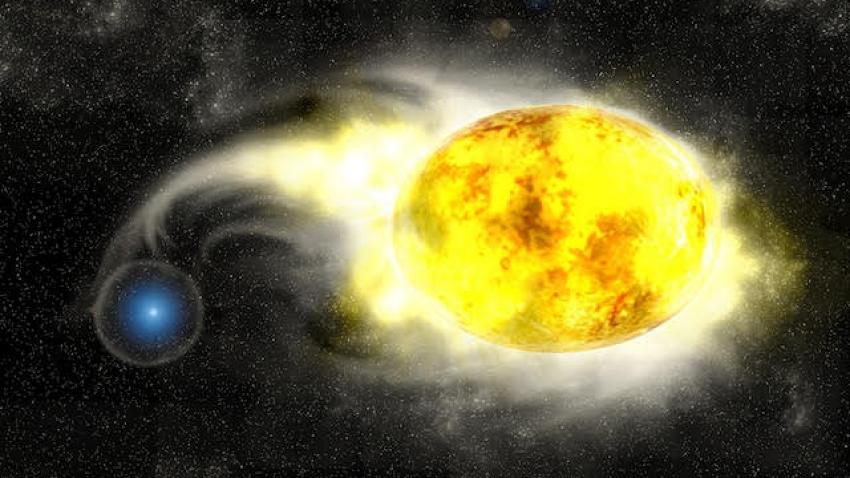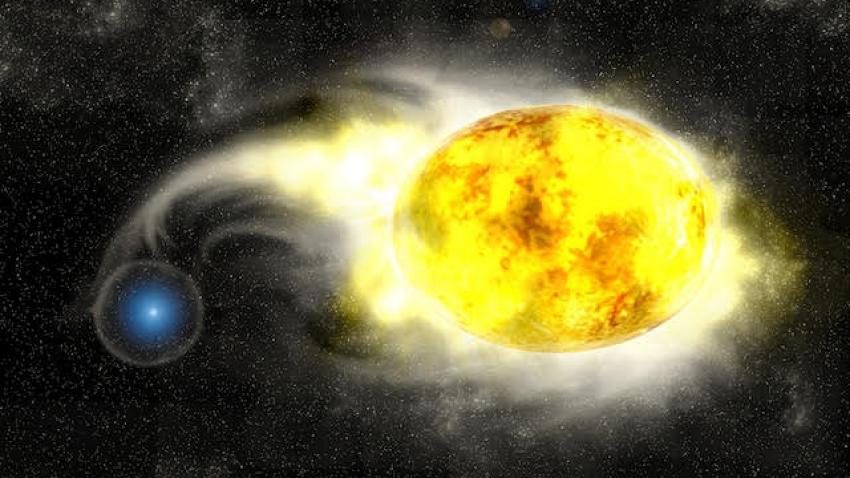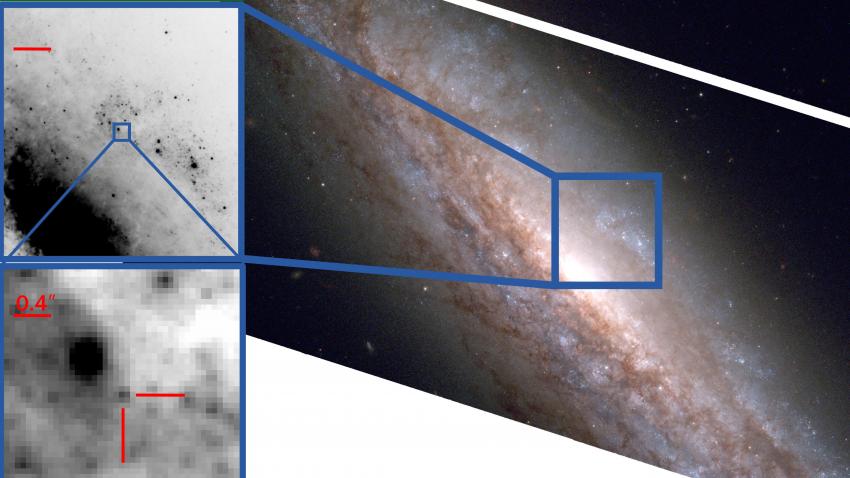A curiously yellow pre-supernova star has caused astrophysicists to re-evaluate what’s possible at the deaths of our Universe’s most massive stars. The team describe the peculiar star and its resulting supernova in a new study published today in Monthly Notices of the Royal Astronomical Society.
At the end of their lives, cool, yellow stars are typically shrouded in hydrogen, which conceals the star’s hot, blue interior. But this yellow star, located 35 million light years from Earth in the Virgo galaxy cluster, was mysteriously lacking this crucial hydrogen layer at the time of its explosion.
“We haven’t seen this scenario before,” said Charles Kilpatrick, postdoctoral fellow at Northwestern University’s Center for Interdisciplinary Exploration and Research in Astrophysics (CIERA), who led the study. “If a star explodes without hydrogen, it should be extremely blue — really, really hot. It’s almost impossible for a star to be this cool without having hydrogen in its outer layer. We looked at every single stellar model that could explain a star like this, and every single model requires that the star had hydrogen, which, from its supernova, we know it did not. It stretches what’s physically possible.”
Kilpatrick is also a member of the Young Supernova Experiment, which uses the Pan-STARRS telescope at Haleakalā, Hawaii to catch supernovae right after they explode. After the Young Supernova Experiment spotted supernova 2019yvr in the relatively nearby spiral galaxy NGC 4666, the team used deep space images captured by NASA’s Hubble Space Telescope, which fortunately already observed this section of the sky two and a half years before the star exploded.
“What massive stars do right before they explode is a big unsolved mystery,” Kilpatrick said. “It’s rare to see this kind of star right before it explodes into a supernova.”
The Hubble images show the source of the supernova, a massive star imaged just a couple of years before the explosion. Several months after the explosion however, Kilpatrick and his team discovered that the material ejected in the star’s final explosion seemed to collide with a large mass of hydrogen. This led the team to hypothesize that the progenitor star might have expelled the hydrogen within a few years before its death.
“Astronomers have suspected that stars undergo violent eruptions or death throes in the years before we see supernovae,” Kilpatrick said. “This star’s discovery provides some of the most direct evidence ever found that stars experience catastrophic eruptions, which cause them to lose mass before an explosion. If the star was having these eruptions, then it likely expelled its hydrogen several decades before it exploded.”
In the new study, Kilpatrick’s team also presents another possibility: a less massive companion star might have stripped away hydrogen from the supernova’s progenitor star. However, the team will not be able to search for the companion star until after the supernova’s brightness fades, which could take up to a decade.
“Unlike its normal behaviour right after it exploded, the hydrogen interaction revealed it’s kind of this oddball supernova,” Kilpatrick said. “But it’s exceptional that we were able to find its progenitor star in Hubble data. In four or five years, I think we will be able to learn more about what happened.”
Media contacts
Amanda Morris
Science and Engineering Editor
Northwestern University
United States
Tel: +1 847 467 6790
amandamo@northwestern.edu
Morgan Hollis
Deputy Press Officer
Royal Astronomical Society
United Kingdom
Mob: +44 (0)7802 877 700
press@ras.ac.uk
Science contacts
Charles Kilpatrick
Center for Interdisciplinary Exploration and Research in Astrophysics
Northwestern University
United States
ckilpatrick@northwestern.edu
Images and captions
Further information
The new work appears in, “A cool and inflated progenitor candidate for the Type Ib supernova 2019yvr at 2.6 years before explosion”, Charles D. Kilpatrick, Maria R. Drout, Katie Auchettl et al., Monthly Notices of the Royal Astronomical Society (2021), in press (DOI: 10.1093/mnras/stab838).
A copy of the paper is available from: https://doi.org/10.1093/mnras/stab838
The study was supported by NASA (award numbers GO-15691 and AR-16136), the National Science Foundation (award numbers AST-1909796, AST-1944985), the Canadian Institute for Advanced Research, the VILLUM Foundation, and the Australian Research Council Centre of Excellence. In addition to the Hubble Space Telescope, the researchers used instruments at the Gemini Observatory, Keck Observatory, Las Cumbres Observatory, Spitzer Space Telescope and the Swope Telescope.
Notes for editors
The Royal Astronomical Society (RAS), founded in 1820, encourages and promotes the study of astronomy, solar-system science, geophysics and closely related branches of science. The RAS organises scientific meetings, publishes international research and review journals, recognises outstanding achievements by the award of medals and prizes, maintains an extensive library, supports education through grants and outreach activities and represents UK astronomy nationally and internationally. Its more than 4,400 members (Fellows), a third based overseas, include scientific researchers in universities, observatories and laboratories as well as historians of astronomy and others.
The RAS accepts papers for its journals based on the principle of peer review, in which fellow experts on the editorial boards accept the paper as worth considering. The Society issues press releases based on a similar principle, but the organisations and scientists concerned have overall responsibility for their content.
Follow the RAS on Twitter, Facebook, Instagram and YouTube
Download the RAS Podcast from Audioboom




